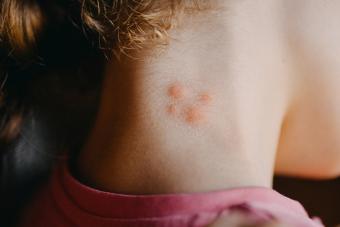
As common as toothaches and earaches, childhood rashes are a cause of discomfort to children and worry to parents. Fortunately, most of them are easily recognized and treated, without even a trip to the doctor.
Common Childhood Rashes
The first sort of rash most children experience is diaper rash, which appears as inflamed skin on the baby's bottom. There are creams that can be used to alleviate the rash, but the best treatment is keeping the skin clean and dry. Diaper rash can also be prevented by using cloth diapers, as these allow your baby's skin to breathe. While cloth diapers are often avoided by parents, they're actually cheaper and healthier for babies. Not only do babies who wear cloth diapers have fewer instances of diaper rash, their skin will stay comfortable even in hot weather because the diapers breathe. Furthermore, cloth diapers don't have any chemicals that can irritate sensitive skin.
As your children get older, they will still get rashes. Other common childhood rashes include:
- Hives
- Eczema
- Heat rash
- Contact rash
- Facial rash
- Viral rash
Hives
Hives are welts caused by an allergic reaction, usually to a food, medication, or irritant. They will often appear suddenly and spread quickly, coming and going over a period as long as a few hours. Hives often, but don't always, itch. The welts can vary in size and shape. Most of the time, they can be treated with Benadryl, taken internally or applied topically. However, if they are accompanied by other allergic reactions such as throat tightness, wheezing, or vomiting, you must go to the emergency room.
Eczema
Eczema is brought about by genetics or allergies and is usually found on the inner elbows and behind the knees in younger children, and the front of the knees and outside elbows in older kids. Its appearance ranges from flat, dry, white patches to red, irritated, raised patches. It can be a brief allergic reaction or a long-term condition. Either way, it is usually treated with hydrocortisone, although its nature may require a more extensive treatment.
Heat Rash
One of the more uncomfortable childhood rashes, it is easily treated by applying a cool washcloth to the affected area. Heat rash is characterized by tiny red bumps or spots, usually on the back of the neck or lower back.
Contact Rash
There are two kinds of contact rashes. One is brought on by exposure to irritants like poison ivy or chemicals and will consist of red, raised bumps or patches with a crusty surface. This rash is easily treated with hydrocortisone, although if it persists, a prescription cream may be needed. The other kind of contact rash will appear as small red pimples or spots and can be brought on by any number of irritants or allergens. You can still treat it with hydrocortisone, but you will have to observe it to determine its cause and then try to avoid that irritant in future.
Facial Rash
Most common in babies and toddlers, flat or slightly raised patches with tiny red bumps around the mouth and chin will be seen regularly. They are usually caused by drooling, pacifiers, food staying on the face too long, or excessive rubbing against a caretaker's clothes. The rash can persist a long time, but is harmless and doesn't need treatment unless its appearance upsets you. Usually, it's best just to let it run its course.
Viral Rash
The most common viral rash is chicken pox. Other such childhood rashes include fifth disease, roseola and coxsackie. They are usually accompanied by a fever and easily treated. Chicken pox begins with fever and red spots or bumps that look like insect bites but will soon turn into blisters. They will soon crust over. The other viral rashes do not have a specific pattern and will have appearances ranging from lacy, pimply, raised or flat bumps, spots or blotches. When you see a rash like this on your child, consult your baby books or go to the doctor to further determine what the virus is and how to treat it.
Children will often have rashes. The best thing to do is keep some hydrocortisone and calamine lotion handy, and don't worry.







